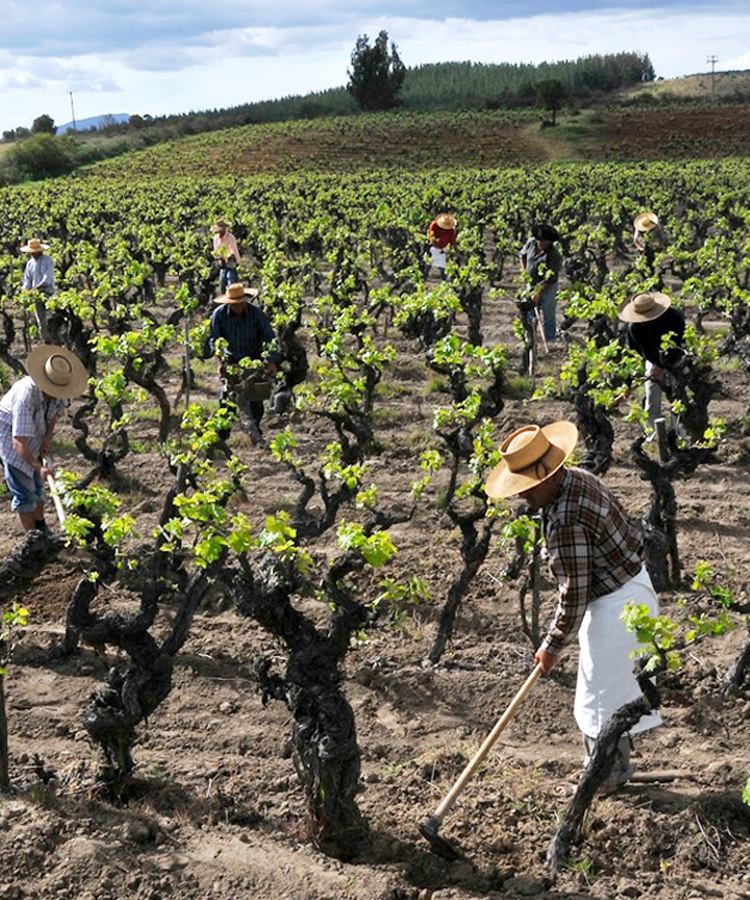
Considering the preponderance of wine available to us these days, it can be hard for the conscientious consumer to know where to look when it comes to sustainable, ethically produced wine.
But one country is making it increasingly easy to find great wines that are also environmentally and socially responsible: Chile. The country has one of the world’s most extensive sustainability accreditation programs in the world with 76 wineries certified by the Wines of Chile Sustainability Code, representing over 80 percent of its total wine exports. These bottles are easy to identify on the shelf, thanks to a prominent seal highlighting that each is a “Certified Sustainable Wine of Chile.”
“Our goal is to work with as many wineries as possible, whether they are members of Wines of Chile or not,” says Patricio Parra, Research & Development Manager for Wines of Chile, a non-profit trade group that represents the country’s wine producers. “This code is open to any Chilean winery, regardless of its size,” he says, from small producers to very large cooperatives.
So, what does a bottle with a “Certified Sustainable” label tell you?
First off, it indicates that the winery has been evaluated and certified by independent judges to verify that it meets the manifold standards of the country’s Sustainability Code. These standards are broken into three sections covering farming practices, work in the winery — including bottling and packaging — and social responsibility, in terms of workers and the surrounding communities.
In the vineyard, the certification encompasses sustainable soil management, disease and weed control, judicious application of fertilizers and other chemicals, and responsible water use, among other tenets.
“Today, without a doubt, the main sustainability issue [in Chile] is the lack of water and the efficient use of water, as a result of the prolonged drought we have been experiencing for many years,” Parra says. As a result, the country’s sustainability program has worked to improve irrigation practices, using meteorological information and in-the-field technology to increase water-use efficiency.
That might sound like a big lift, but Chilean wineries have shown that even huge changes can be implemented very quickly. At Viña Santa Rita, a Sustainability Code-accredited winery in the Maipo Valley region, sustainability director Elena Carretero Gómez notes that 95 percent of the 140-year-old winery’s vineyards are now using irrigation technology to improve water efficiency, thanks to a project that started just six years ago. The program even extends to the design and planting of new vineyards, Carretero Gómez says, ensuring efficiency for the future by specially selecting both the rootstock and the clone to suit the land where they will grow.
As for sustainable practices in the winery, the code examines a winery’s efforts when it comes to waste reduction and recycling, energy use, industrial water management, contamination prevention, and the reduction of emissions and waste. Even a winery’s air-conditioning system is taken into account, Parra notes, since that contributes to its overall environmental impact.
“Each participating winery must have a plan to optimize the use of electricity and fuel, with clear and verifiable objectives, both for in the cellar and in the vineyards,” Parra says. “They are evaluated on the efficient management of heating, ventilation, and cooling, which is part of reducing energy consumption in all facilities.”
At Viña Santa Rita, a drive for sustainability has led to far-reaching changes in every corner of the winery, from barrel rooms to offices.
“In terms of energy, we have modified our lighting policy for the cellars, replacing the entire system in the warehouses and cellars with LED lights, photovoltaic, and motion sensors,” Carretero Gómez says. The winery’s new bottling lines use high-efficiency steam-generation systems that replace the need for fossil fuels, as well as a heat-recovery system.
Beyond the importance of environmental sustainability, the Chilean Wine Sustainability Code also has protections for winery workers, including measures to prevent child labor and forced labor. Other social factors evaluated by the certification program include each winery’s code of ethics, its health plans and occupational safety plans, analysis of its working conditions, its communication with neighboring communities, its health and safety protections, and the conditions for organized labor and unions.
In short: There’s a long list of requirements before a wine gets the Sustainable Wine of Chile seal.
“The total number of requirements in the vineyard, winery, and social areas comes to 276,” Parra says. “It is a very complete code.”
And yet it’s constantly evolving: Just recently, another 70 requirements have been added to certify the country’s wineries in terms of sustainable wine tourism, bringing the total number of requirements in the Sustainability Code up to 346. And this fall, the sustainability program launched a new carbon-footprint project to establish science-based carbon-reduction targets to help fight climate change. According to Parra, “An important group of Wines of Chile wineries, which represent about 52 percent of Chile’s bottled wine exports, have joined a sectorial carbon-footprint measurement initiative aligned with [the Science-Based Targets Organization] objectives.” The goal is that these wineries will make an impact using the Science-Based Targets technical and scientific information.
Although it has already made great strides, Parra says the group still hopes to expand. “We want to integrate more companies and producers, especially small wine producers.”
That’s good news for Chile — and for wine lovers—and, more importantly, good news for the planet. Having initially launched in 2010, Wine of Chile’s Sustainability Code is now just 10 years old. And while it’s easy to look at the dark side and complain that most countries don’t yet have a 346-point Sustainability Code to ensure responsible winemaking, there’s a bright side to it, too. After all, it’s only taken Chile a decade to get 80 percent of its wine exports certified for sustainability and social responsibility.
Just imagine what it would be like if the rest of the world did, too.
This article is sponsored by Wines of Chile. Taste the Unexpected.



